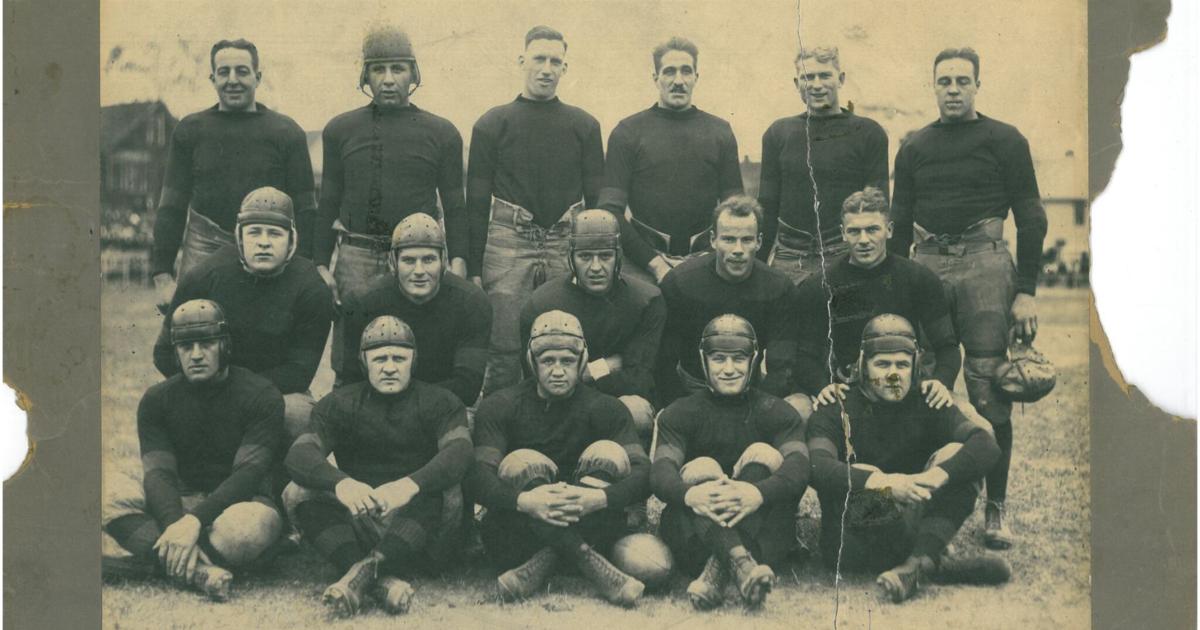Erik Brady: Football's spread formation was born in Buffalo 100 ... - Buffalo News

Happy birthday to you, Spread Formation. May we call you Spread? Mr. Formation seems a tad formal.
You, my dear Spread, were used in an NFL game for the first time 100 years ago — on Nov. 11, 1923. And this history happened right here in Buffalo.
Nowadays you are the NFL’s dominant offense, but back then football was played most often from tight running formations — what we’ve come to think of as “three yards and a cloud of dust.” It was slug it out.
Now, it’s air it out. Thanks to you.
The Buffalo All-Americans used you a century ago in a 3-3 tie against the Canton Bulldogs. That might not sound like much, but it is the only game the Bulldogs didn’t win that year, as they went 11-0-1 as NFL champions.
Tommy Hughitt was quarterback and coach of the All-Americans when he used you, a fledgling formation, in that Canton game. And he’d borrowed the idea of spreading out receivers — known then as ends — from Luke Urban, one of the ends on the All-Americans.
People are also reading…
Urban was also the football coach of Canisius College at the same time, and it so happens that his 1923 team was among the best in Golden Griffins history. They went 8-1 that year, and those eight wins came by a cumulative score of 227-0.
They beat all their small-college foes, losing only to their one major-college opponent, Boston College — Urban’s alma mater. The Griffs gained good yardage that day by way of the “forward pass,” as it was then called, but lost 21-0.
“Coach Luke Urban’s team put up a game battle and at times gave the Eagles plenty to worry about,” wrote The Buffalo Courier, “using a spread formation that enabled the Buffalo players to complete pass after pass.”
Urban’s Griffs beat all their other opponents. They won big (30-0 over St Francis, Pa.), medium (17-0 at Niagara), and close (3-0 over St. Bonaventure). Hughitt happened to see the St. Bona game up close: He was the referee.
The Buffalo Evening News wrote this of the All-Americans’ adopting Urban’s spread for that game against Canton: “Hughitt has watched the Canisius squad use this method of attack so successfully.”
Jeffrey J. Miller, in “Buffalo’s Forgotten Champions,” his book on the All-Americans, tells the tale: “During the week leading up to the (Canton) game, Hughitt convened with Urban to devise some new plays that would hopefully open up the listless Buffalo offense. … Though one practice might seem insufficient for installing a new offense, many of the players on the Buffalo roster once played for Urban at Canisius and were already familiar with his system.”
The NFL’s first spread worked at first: Buffalo took a 3-0 first-quarter lead on a 25-yard field goal. Then the game devolved into a defensive struggle. The All-Americans held their lead until the closing moments, when the Bulldogs blocked Hughitt’s punt and then scored on a dropkick. Canton 3, Buffalo 3.
Credit for creating the spread is often given to Rusty Miller, who began using it in Texas high school football in the late 1920s, and Texas Christian University coach Dutch Meyer, who wrote a 1952 book called “Spread Formation Football.” Howard Fletcher, at Northern Illinois, added the shotgun to the spread in the mid-1950s. Sid Gilman concocted a souped-up passing game for the San Diego Chargers in the 1960s, and Don Coryell brought four-receiver sets to the Chargers in the 1970s and 1980s.
Somehow Urban is forgotten in all of this. He ought to be remembered for the NFL’s first spread — and for playing for the Buffalo All-Americans and baseball’s Buffalo Bisons at the same time he was coach of the Canisius football and basketball teams. That’s quite the quinella.
But wait. He played goalie on the hockey team at Boston College and was a club pro at Grover Cleveland Golf Course in the 1930s.
It all makes Urban the Swiss Army knife of Buffalo sports history. He played three seasons for the All Americans as an end on both offense and defense. George Halas selected Urban to his All-Pro team in 1922.
“The fans quickly appreciated the value of Luke Urban,” wrote The Buffalo Evening News after his first game for the All-Americans, in 1921, at the Canisius football field known as the Villa. “Time after time he went through the visitors to make the tackle before they had gained a yard.”
The lone loss for Urban’s 1923 Griffs came at Braves Field, home of baseball’s Boston Braves. Later he played parts of two seasons there as a catcher for the Braves, in 1927 and 1928, while splitting time with the Bisons and still coaching two sports at Canisius.
“Luke Urban’s face was as battered as the moon’s,” says the Canisius 1970 centennial history. “He looked as much like an archetypical catcher as, in the naming-the-animals anecdote, Adam said the aardvark looked like an aardvark.”
Adam is father of us all — and Urban father of the spread formation.
That’s you, birthday boy. So happy birthday to your spread-out self.
You don’t look a day over 99.
Labels:
Star is born today
Thanks for reading Erik Brady: Football's spread formation was born in Buffalo 100 ... - Buffalo News. Please share...!

0 Comment for "Erik Brady: Football's spread formation was born in Buffalo 100 ... - Buffalo News"